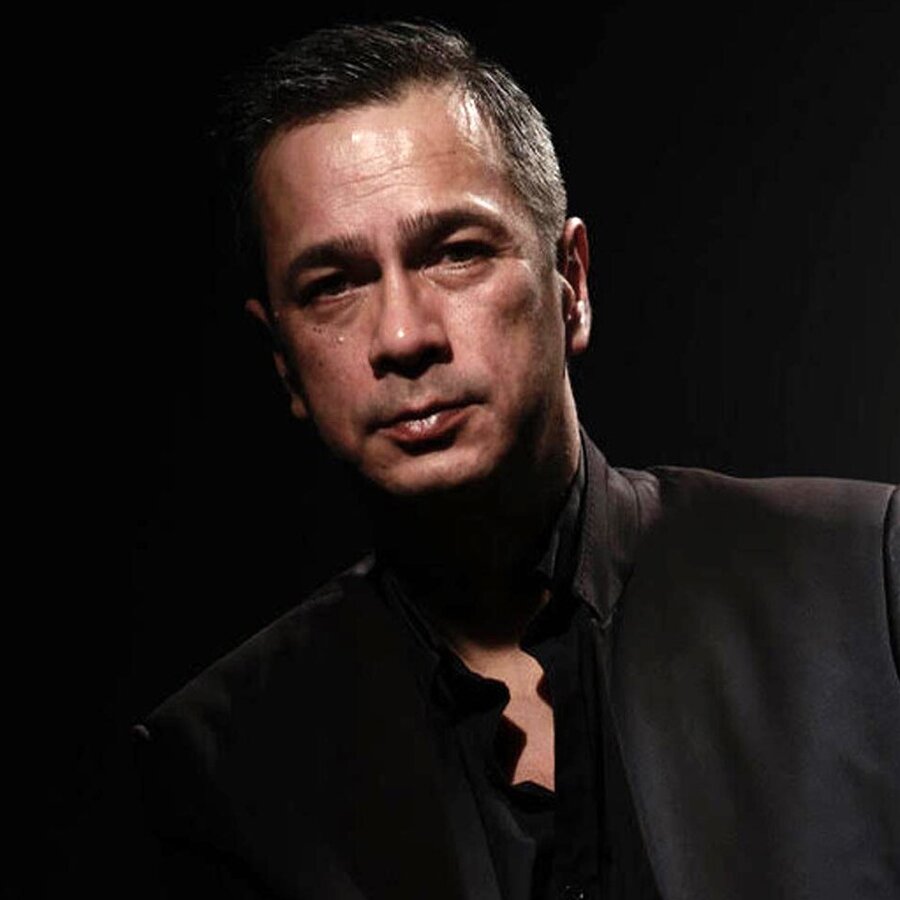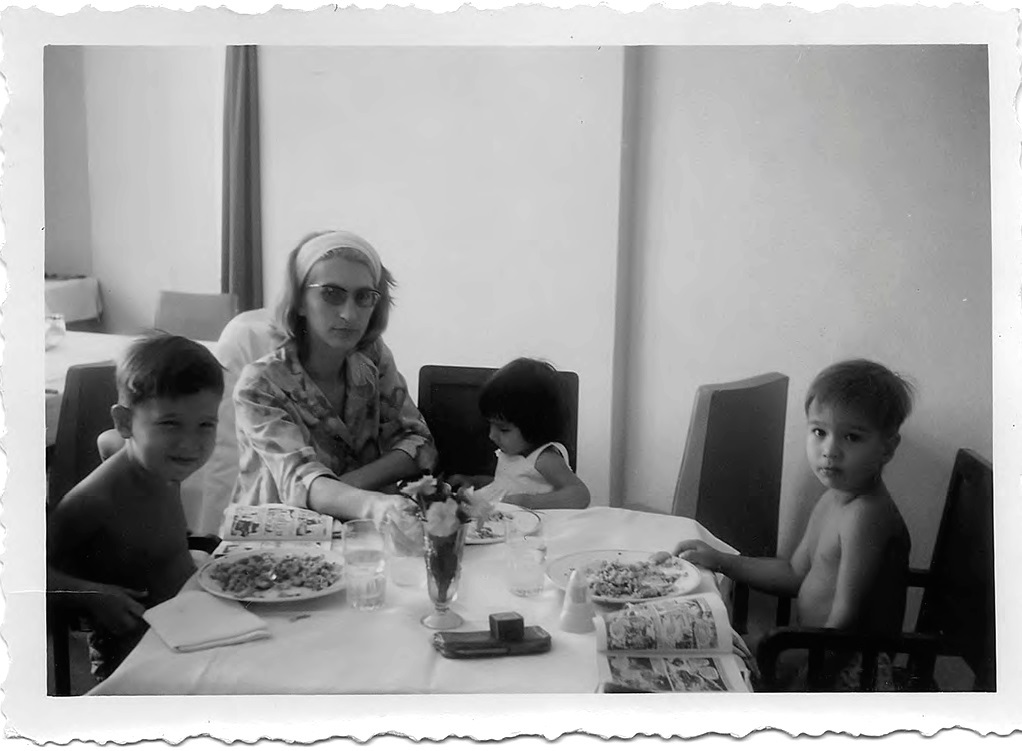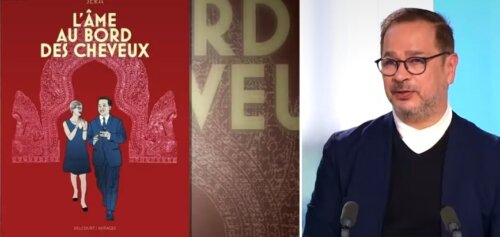Phousera Ing

Ing Phousera (artist’s name Séra) (b. 1961, Phnom Penh, Cambodia) is a visual artist who has been exploring the themes of exile, civil war, social amnesia and remembrance.
Escaping the Khmer Rouge storming Phnom Penh in 1975, he took refuge in France with her mother and two siblings, while their father fell prey of the terror régime. It is only in 2023 that he explicitely mentioned such tragic circumstances in his latest graphic novel L’ame au bord des cheveux (Delcourt, Paris). In an interview with French daily L’Humanité, he recalled in 2023: “En une joumée, tous les habitants du quartier disparaissent, obéissant aux soldats qui les envoient dans les campagnes. Je me souviens de quinze jours d’attente angoissante à l’ambassade de France, sans savoir ce qui va nous arriver. J’ai 13 ans. […] Mon père reste convaincu que les Cambodgiens né s’entre-tueront pas éternellement, que les choses vont s’arranger. N’ayant pas la nationalité française, contrairement à nous, son rapatriement est incertain. Finalement, l’ambassade livre mon père aux Khmers rouges, et nous envoie en camion jusqu’à la frontière. Les autorités françaises ont livré des dizaines de Cambodgiens réclamés par les Khmers rouges. Quelle bêtise …Cinquante-huit passeports ont été utilisés pour protéger des femmes, des personnes âgées et des jeunes cambodgiens qui ont passé la frontière avec les Français. Deux cents autres passeports vierges pouvant sauver autant de vies ont été détruits. Cette responsabilité directe de l’Administration française dans la mort de mon père, trois ans plus tard, m’a empêché de tourner la page de cette histoire pendant des années. Ma mère a aussi énormément souffert de cet évènement.” [In one day, all the inhabitants of our district disappear, obeying the soldiers who send them into the countryside. I remember fifteen days of agonizing waiting at the French Embassy, not knowing what was going to happen to us. I am 13 years old. […] My father remains convinced that the Cambodians will not kill each other forever, that things will work out. Not having French nationality, unlike us, his repatriation is uncertain. Finally, the embassy hands over my father to the Khmer Rouge, and sends us by truck to the border. The French authorities handed over dozens of Cambodians claimed by the Khmer Rouge. What nonsense… Fifty-eight passports were used to protect women, old people and young Cambodians who crossed the border with the French. Two hundred other blank passports that could save as many lives were destroyed. This direct responsibility of the French Administration in the death of my father, three years later, prevented me from turning the page of this story for years. My mother also suffered greatly from this tragedy.”]
Upon completing his graduate and postgraduate studies in Fine Arts and the Science of Art at the Sorbonne University in Paris, Séra developped a parallel career as teacher (at Sorbonne University) and artist : painting, sculpture, drawing, engraving, and graphic novels.
Author of a trilogy of graphic novels reflecting on the Cambodian tragedy : Impasse et rouge (1995, reedition 2003 and 2023), L’eau et la terre (2005, repub. 2023), Lendemains de cendres (2007, repub. 2023), a graphic essay essay about the history of Cambodia, Concombres Amers (2009, in French and Khmer). His published body of work will soon appear in the English language.
With Cambodian artist Vann Nath, Séra held several workshops within the Ateliers de la Mémoire (Memory Workshops), an initiative ot the Bophana Audiovisual Centre engaging young Cambodians into the effort of remembering a past both familiar and still unknown.
In his 2019 thesis, the artist noted that it was in 2008 that he resolved to “join sculpture creation, painting and illustrated books under a single patronym, Séra”. The year before, he had reated an outdoor memorial sculpture for the Cambodian community in the city of Bussy-Saint-Georges, France. This emblematic monument to Those Without Names was installed on a roundabout since renamed : Phnom Penh Place, and in April 2012 the French Institute in Phnom Penh marked its 20th anniversary with an exhibition dedicated to his prolific painted work of Séra. Also in 2012, Séra was named Curriculum Director of the Phare Ponleu Selpak School in Battambang,
He has remarked that the sculptures of Angkor and popular ‘bandes dessinées’ (comics) bought by her mother have both informed his budding artistic character, adding: “Quand je reviens au Cambodge, je né manqué jamais de retourner en immersion dans les temples d’Angkor. Ce retour aux sources de l’art est encore et toujours un moment d’apprentissage des formes et de l’espace. J’y reviens pour voir les pierres et la nature, établir un lien, un dialogue. Ainsi, suivant les saisons, la pierre n’offre pas le même aspect, les mêmes couleurs. Ma peinture se nourrit de l’usure des pierres d’Angkor, quand ma sculpture naît de l’apprentissage de la vie.” [“When I go back to Cambodia, I never fail to immerse myself in the temples of Angkor. This return to the sources of art is still and always a moment of learning about forms and space. I come back to see the stones and nature, to establish a link, a dialogue. Thus, depending on the season, the stone does not offer the same aspect, the same colors. My painting is nourished by the wear of the stones of Angkor , when my sculpture is born from learning about life.”


